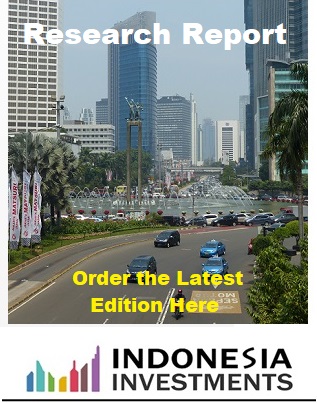Be aware that there are scammers active on WA pretending to be Indonesia Investments
21 April 2025 (closed)
Jakarta Composite Index (6,445.97) +7.70 +0.12%
A Wave of Fresh Air in Indonesia's Cigarette Manufacturing Industry
Although Indonesia's cigarette industry is considered to be a sunset industry (which refers to an industry that has passed its peak or boom periods) there are two factors that may somewhat pause the industry's decline on the short and middle-long term.
Indonesia's cigarette industry is still huge. Not only does Indonesia have a big population (consisting of some 265 million people) but it is also estimated that around 60 percent of Indonesian men smoke cigarettes. Meanwhile, wide distribution networks make sure that cigarettes are available in all corners of the archipelago. And considering the raw materials that are required for the manufacturing process of cigarettes are mostly domestically-sourced, a cigarette package can be offered at a relatively low price to consumers. Few countries offer cigarettes as cheap as in Indonesia.
However, despite the aforementioned positive context, profitability in Indonesia's cigarette manufacturing industry has come under some pressure in recent years due to government policies. For example, graphic warning images on cigarette packages have become mandatory (in an attempt to discourage the consumption of cigarettes). Meanwhile, restrictions on cigarette and tobacco products advertising have been implemented by authorities in recent years.
Moreover, the Indonesian government has the tendency to raise excise rates on tobacco products at the start of each year in an effort to collect more tax revenue as well as to discourage the consumption of cigarettes (as the higher excise should lead to higher retail prices of cigarette packages).
Despite these measures that discourage the consumption of cigarette and other tobacco-related products, the cigarette industry of Indonesia remains huge. The fact that two cigarette manufacturers - HM Sampoerna and Gudang Garam - are within the top ten of largest listed companies on the Indonesia Stock Exchange (in terms of market capitalization) says enough.

Policies that Bring a Wave of Fresh Air in Indonesia's Cigarette Manufacturing Industry
This November 2018 two policies were announced that bring a wave of fresh air in Indonesia's cigarette industry, even though the impact is only temporary in our opinion. Firstly, Indonesian Finance Minister Sri Mulyani Indrawati confirmed that Indonesia will not raise the excise tax on cigarettes in 2019. Secondly, as part of the 16th economic policy package the Indonesian government decided to remove the clove and white cigarette production manufacturing industry from the Negative Investment List (this list mentions all sectors that are closed or partially closed to foreign investment).
For existing cigarette producers it is great news to learn that the excise tax will not be raised at the start of 2019. After all, a big chunk of cigarette manufacturers' costs of goods sold (COGS) involve excise taxes. The decision to leave the excise tax unchanged next year could lead to a rise in the volume of cigarette sales next year. In particular Gudang Garam is expected to benefit from this decision as the company dominates in the middle and lower class segments (these segments are more vulnerable to price fluctuations).
Still, analysts do expect Indonesian cigarette manufacturers to raise prices of cigarettes in 2019 by between 3-5 percent (which is a small increase compared to the price hike that would have been imposed in case of another excise tax hike), hence there is plenty of room for growth of cigarette manufacturing companies' net profit in 2019. HM Sampoerna's net profit is estimated to rise to IDR 14.83 trillion (approx. USD $1.0 billion) in 2019 (from an estimated IDR 13.17 trillion in 2018), while Gudang Garam's net profit is estimated to reach IDR 10.59 trillion (approx. USD $725 million), from an estimated IDR 8 trillion in 2018.
Comparison Performance of Listed Cigarette Manufacturers on the Indonesia Stock Exchange:*
GGRM = Gudang Garam
HMSP = HM Sampoerna
WIIM = Wismilak Inti Makmur
RMBA = Bentoel Internasional Investama
* normalized stocks, 1 January 2018 = 100


